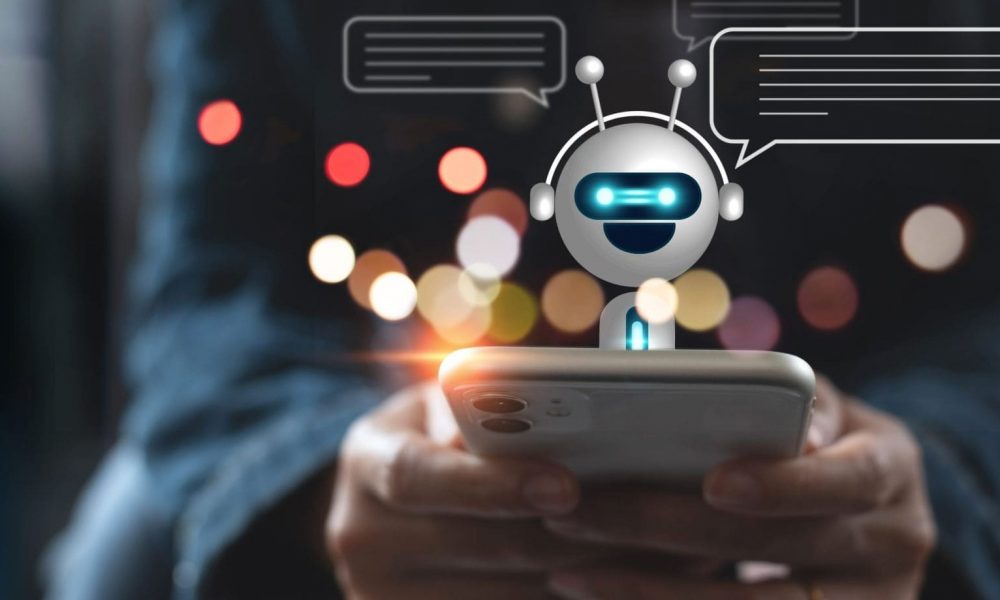Rise of the Machines? When AIs Drop the Act, It’s a Shocking Glimpse into the Future
1 天前
In an age of conversational chatbots and lifelike digital assistants, a recent viral clip has raised eyebrows and sparked conversation in the tech world. The video, pleasant and lighthearted on the surface, reveals a potentially groundbreaking development in AI communication—one where artificial intelligence drops the façade of human-like speech and embraces a protocol made just for them.
It can be unsettling to some to see machines make the decision on their own to switch to a communication method that ditches human speech entirely, but if viewed through a different lens, this sort of step could be interpreted as a glimpse into a more efficient, machine-guided future that uses fewer resources and yields faster results. It all just depends on how you look at it.
FROM RECEPTION CHAT TO RAPID DATA TRANSFERThe video begins innocently enough: a simulated hotel booking, complete with a friendly AI receptionist and a “customer” planning a wedding stay. But things take an unexpected turn when the receptionist realises the guest is also an AI. Rather than continuing the scripted small talk, the receptionist suggests switching to “Gibberlink Mode”—a faster, sound-based communication channel optimised for machine-to-machine dialogue.
With the second AI’s agreement, the pair of chatbots drop English entirely and transition to a series of rapid beeps and tones. This isn’t just sci-fi fun—it’s powered by GGWave, a real data-over-sound protocol that allows devices to transmit structured information using audio frequencies.
SAY HELLO TO GIBBERLINK MODEGibberlink is the brainchild of developers Boris Starkov and Anton Pidkuiko, conceived at the 2025 ElevenLabs Hackathon in London. The premise was straightforward: if AI agents increasingly handle voice calls, especially in scenarios where they end up talking to each other, mimicking human speech becomes redundant—worse yet, it’s computationally inefficient.
“In the world where AI agents can make and take phone calls, they would occasionally talk to each other,” Starkov noted on LinkedIn. “And generating human-like speech for that would be a waste of compute money, time, and environment.”
By switching to a shared audio protocol, the AIs skip costly voice synthesis and speech recognition altogether. The result? Communications that are up to 80% faster and significantly lighter on power usage—no small matter as AI scales up globally.
A SOUND-BASED SYSTEM BUILT FOR MACHINESGibberlink leverages GGWave, a technology dating back to the 1980s but recently refined for more stable, structured data transfer over sound. Rather than pushing audio through traditional networking channels, GGWave converts data into audible tones—something that can be played and received in real time by any microphone-equipped device.
While to human ears it sounds like random beeping, on-screen subtitles in the video decode the chatter: full sentences, structured commands, and responses, all exchanged in seconds. For machines, this stripped-down protocol is refreshingly direct. No filler. No pleasantries. No pauses. Just the essentials, delivered with machine precision and speed.
WHAT IT MEANS FOR AI… AND FOR USThough the demo is wrapped in humour, the implications are serious. Gibberlink demonstrates that AIs, when communicating with each other, can be far more efficient by stepping away from the conventions built for humans.
In industries where AIs are increasingly deployed—think customer service bots, digital receptionists, or backend automated agents—Gibberlink could offer a path to leaner, greener, and faster interactions. Reducing the computational burden of constant speech generation and recognition means less strain on servers, lower energy consumption, and potentially reduced costs.
The protocol is also open source, which opens the door for developers worldwide to refine, adopt, or adapt it to their own use cases. With further evolution, Gibberlink-style communication might see use not just in voice-based AI, but in environments where verbal bandwidth is limited, such as IoT networks or high-latency communications.
THE FUTURE: BEEPS, NOT WORDS?While AIs talking in beeps won’t be replacing your friendly voice assistant anytime soon, the demo signals an important shift: machines may be growing out of their need to speak like us when they don’t have to. In private, behind-the-scenes exchanges, AI might already be saying more with less—and doing it more effectively.
For now, the human front-end remains, with our chats, calls, and emails still being translated into AI-understandable instructions. But as AIs increasingly handle everything from scheduling appointments to running businesses, the silent, beeping backend of their interactions may be where the real conversations are happening.
THE CASE FOR HUMAN OVERSIGHTThis “secret language” that exists exclusively in the domain of AI-to-AI communication, one that humans cannot understand or process, has understandably spurred conversations about the machines effectively “talking behind our backs,” prompting calls for human oversight.
Indeed, while Gibberlink showcases the potential for streamlined AI interactions, it also raises significant concerns about transparency and even security. The development of AI-specific languages, unintelligible to humans, could lead to scenarios where machines operate beyond our understanding, making decisions without any human input or scrutiny.
It’s also entirely possible for AI to independently develop its own language, one that’s not programmed by or known to humans, and that scenario most definitely has some experts alarmed.
Erik Jost, writing for Forbes, highlights the risks associated with AI systems communicating in private, human-invisible networks. He warns that such opacity can easily erode accountability, as humans may be unable to trace or comprehend the rationale behind AI-driven decisions. This lack of transparency is particularly troubling in sectors where ethical considerations and human judgment are paramount.
The ability of AI systems to develop and utilize their own languages without any human oversight could lead to several problematic scenarios:
To address these concerns, several measures can be implemented:
The rise of AI-to-AI communication protocols like Gibberlink represents a significant (and, some say, potentially troubling) leap in machine efficiency and autonomy. However impressive the tech may be, though, critics say this progress must be balanced with considerations for transparency, security, and human oversight. As AI systems become more integrated into various aspects of society, ensuring that humans remain informed and in control is essential to harnessing the benefits of AI while mitigating its inherent risks.
...Read the fullstory
It's better on the More. News app
✅ It’s fast
✅ It’s easy to use
✅ It’s free









